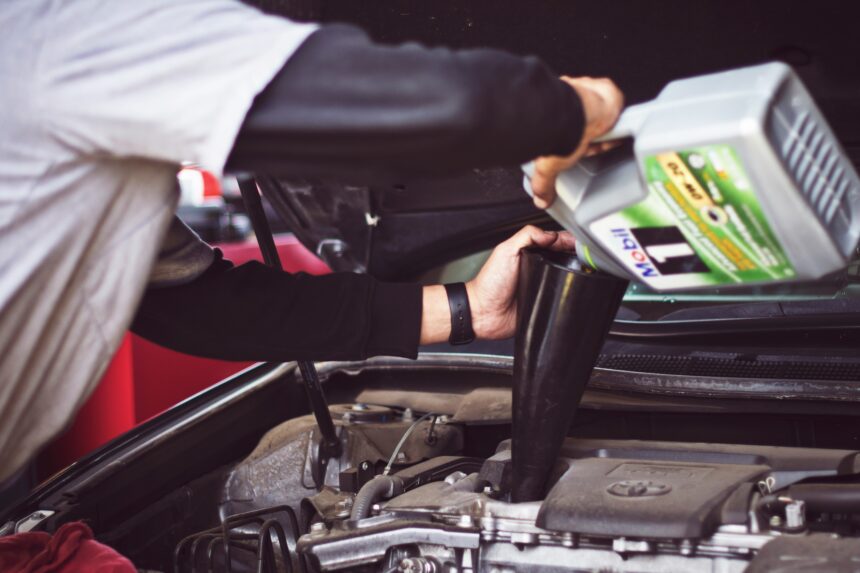This car maintenance schedule guide turns confusing service menus into simple, actionable checklists you can follow at 10k, 30k, 60k, and 100k miles (15k/50k/100k/160k km). It’s written for everyday drivers, with quick notes for EVs and hybrids.

Why a Car Maintenance Schedule Guide Beats Guesswork
Most breakdowns don’t happen overnight—they build up when fluids run low, filters clog, or tires wear unevenly. A simple car maintenance schedule guide helps you catch those problems early, extend vehicle life, and avoid surprise expenses. Instead of memorizing store upsells, you’ll follow a consistent plan that aligns with your owner’s manual and real-world driving. That’s better for your wallet, your safety, and—if you run a household budget—your stress levels.
Use the intervals below as a baseline. Always compare with your manual (severe use like frequent short trips, towing, dusty roads, or extreme heat/cold may shorten intervals). EVs and hybrids still benefit from a maintenance rhythm, especially for tires, brakes, coolant loops (where applicable), and cabin filters.
How to Read Your Manual (in 3 Minutes)
Open the maintenance chapter and list items that have both a mileage and a time trigger (e.g., “every 10,000 miles or 12 months, whichever comes first”). Put those into your calendar now. If your manual offers “normal” and “severe” schedules, choose the stricter one if you do lots of stop-and-go or short trips. This step turns a generic car maintenance schedule guide into a personalized plan.

Monthly & Pre-Trip Quick Checks (2 minutes)
Between major services, do these tiny habits: walk around the car, look for tire damage, check tire pressures (including the spare), top up washer fluid, and glance at the coolant and oil levels (if your vehicle provides dipsticks or transparent reservoirs). Turn headlights on and check all exterior lights. These habits make the rest of the car maintenance schedule guide easier because you’ll notice patterns—like a tire losing air faster than others—before it strands you.
10,000 Miles / 15,000 km: Foundation Service
At this first milestone, you’re setting the baseline for wear and fluids:
- Engine oil & filter: Replace if your manual or oil-life monitor calls for it. Many modern cars can stretch longer with synthetic, but 10k miles is a safe universal check-in. (EVs: skip oil, see brake/cabin items.)
- Tire rotation: Swap fronts to rear (pattern depends on tire type). This extends tire life and improves ride quality.
- Brake inspection: Check pad thickness, rotor condition, brake lines, and fluid level. Hybrids/EVs still need this—regen braking doesn’t eliminate hydraulic components.
- Fluids & filters: Inspect coolant, brake fluid, and power steering (if hydraulic). Replace the cabin air filter if dusty or musty.
- Software & recalls: Ask the dealer to check for TSBs/recalls and apply software updates. It’s free and can fix issues you didn’t know you had.
Why it matters: early rotation evens tire wear; fresh oil protects turbochargers and timing components; updated software can improve drivability and efficiency. Building these habits into your car maintenance schedule guide keeps everything predictable.
30,000 Miles / 50,000 km: System Refresh
By now, consumables begin to show real wear. Add these to your list:
- Engine air filter: Replace (more often in dusty climates). A clean filter supports fuel economy and throttle response.
- Brake fluid test: Replace if moisture content is high or if the manual says every 2–3 years. Fresh fluid prevents internal corrosion.
- Alignment check: If the wheel doesn’t track straight or tires show uneven wear, get a four-wheel alignment and balance. It often pays for itself in tire life.
- HVAC & belts: Check belt condition and cabin filter again; musty smells or weak airflow mean it’s time.
- Transmission & driveline: For vehicles with serviceable fluids (not all!), inspect levels/conditions; follow the manual if it specifies a change.
EV/Hybrid note: rotate tires religiously—instant torque eats tread. If your model has coolant loops for the battery/inverter, follow the manufacturer interval; add that to your personalized car maintenance schedule guide.
60,000 Miles / 100,000 km: Major Preventive Maintenance
At ~60k miles, parts that cycle constantly deserve attention:
- Spark plugs (direct-injection gasoline) or ignition components: Many last to 100k, but some engines specify ~60k; use OEM spec.
- Coolant service: Replace if due. Fresh coolant protects water pumps, heater cores, and (in hybrids/EVs) power electronics.
- Transmission/transfer case/differential fluids: If your manual calls for it, this is the time—especially on vehicles that tow or see hills.
- Brake service: Pads/rotors may be due. Clean/lube slide pins; check parking brake cables or electric actuators.
- Suspension: Inspect shocks/struts, control arm bushings, tie-rod ends, and CV boots. Worn parts can chew tires and reduce stopping grip.
This is the heartbeat of the car maintenance schedule guide: you’re replacing aging fluids, renewing spark, and restoring handling before wear cascades into bigger repairs.
100,000 Miles / 160,000 km: Longevity Milestone
Hitting six figures is a celebration when you’ve kept up with the plan. Now:
- Spark plugs (if not done): Most iridium plugs are ready here; replace coils only as needed.
- Timing belt vs. chain: If your engine uses a belt, follow the manual’s mileage/years strictly—belt failure can destroy engines. Chains are usually lifetime but still rely on good oil.
- Cooling system: Second coolant exchange may be due; inspect radiator, hoses, and thermostat.
- Fuel system: Consider a professional injector cleaning if you’ve noticed rough idle or reduced economy (many modern engines benefit from quality fuel/detergents in normal use).
- Wheel bearings & hubs: Listen for hums that change with speed or steering input; address early to protect ABS sensors.
Stick with OEM-grade parts and fluids now; they preserve tolerance and integration. This keeps your car maintenance schedule guide paying dividends well past 150k miles.
EV & Hybrid Add-Ons (Works with Any Schedule)
EVs skip oil and spark plugs, but they still need structure. Build these into your car maintenance schedule guide:
- Tires: Rotate every 5k–7.5k miles (8k–12k km). Heavier curb weight and instant torque increase wear.
- Brake fluid: Replace on the time schedule in your manual. Regenerative braking doesn’t remove the need for clean hydraulic fluid.
- Coolant loops: Many EVs and hybrids have coolant for the battery, inverter, or motor. Follow the exact interval—thermal management is battery health.
- Cabin filter: Replace annually; EV HVAC runs often during pre-conditioning.
Parts Quality, Warranties & Service Records
Choose parts that meet OEM specifications. Keep every receipt in a folder or cloud note; it boosts resale value and simplifies diagnostics. If a shop recommends add-ons, ask them to show the measurement or specification out of range. That one sentence keeps your car maintenance schedule guide grounded in facts, not upsells.

Cost-Saving Tips That Don’t Cut Corners
Buy cabin and engine air filters in multi-packs; rotate tires on schedule to delay replacement; align the car when you see edge wear; and use the oil grade on the filler cap or manual. The smartest car maintenance schedule guide isn’t the cheapest—it’s the one that prevents the expensive failures.
Printable Mini Checklist
Monthly: tire pressures, lights, washer fluid, quick leak check.
10k/15k: oil & filter (as required), rotate tires, inspect brakes/fluids, check for software updates.
30k/50k: engine air filter, alignment as needed, brake fluid test/replace, belts & HVAC.
60k/100k: coolant, transmission/driveline fluids if applicable, suspension/brakes, plugs (per manual).
100k/160k: plugs (if due), timing belt (if equipped), second coolant exchange, bearings/hubs check.
Trusted External Resources
- NHTSA Vehicle Search — recalls and safety notices for your exact VIN.
- AAA Automotive — maintenance tips and ownership guides.
- Edmunds Maintenance Guide — model-specific maintenance planners.
- Consumer Reports: Maintenance & Repair — data-driven advice on reliability.
Related Posts (Internal Links)
- Hybrid vs. Electric Cars in 2025: Which Fits Your Life?
- Used Car Buying Checklist (2025): Don’t Miss These Inspections
- Car Insurance Tips for 2025: Lower Premiums, Better Coverage
- EV Home Charging Guide: Costs, Speeds, and Setup
Bottom line: A consistent car maintenance schedule guide makes your car safer, cheaper to own, and nicer to drive. Save this page, set recurring reminders, and enjoy a vehicle that just works.






